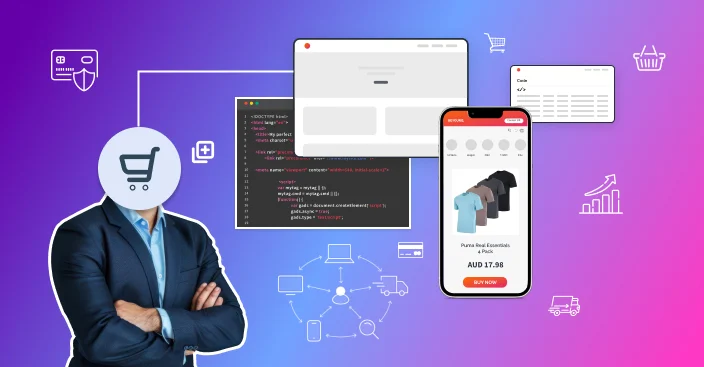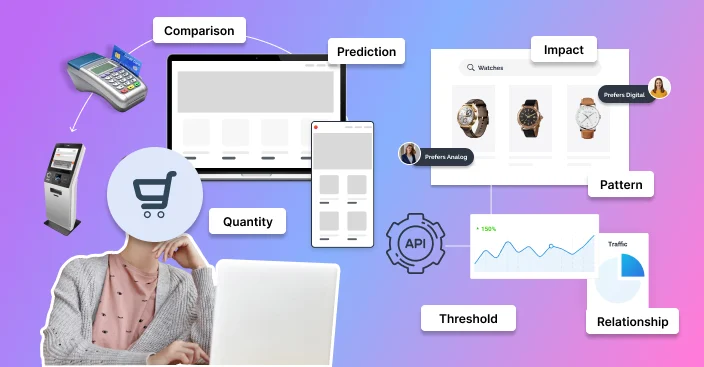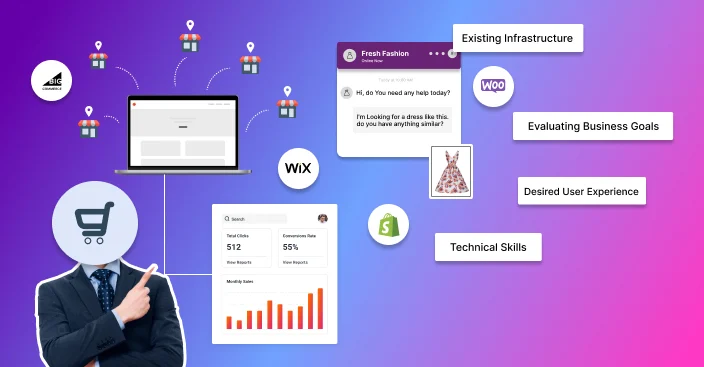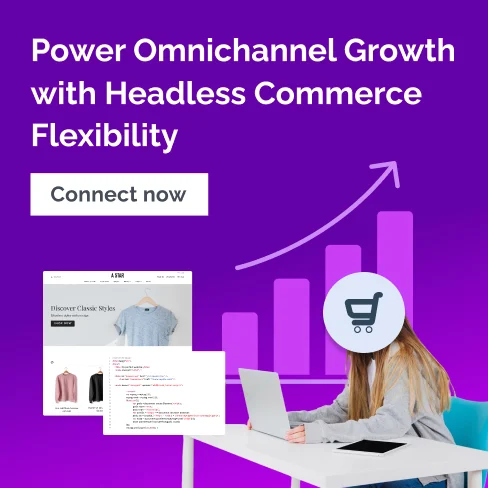How Australian Retailers Can Boost Omnichannel Experiences With Headless Commerce

To create a seamless eCommerce experience which is loved by your Australian customers, it’s important to choose the right technology. A tech support that is future-proof, flexible, and scalable can be an exciting step.
This is where headless commerce needs to be initiated. This eCommerce architecture will help to boost your brand’s digital presence and provide seamless omnichannel experiences for the Australian retailers.
With the help of its strategic rather than technological choice, businesses can switch from a monolithic platform to a headless arrangement. With detailed planning and the use of appropriate tools, this process can be possible to conducted.
Even if you are a mid-tier or corporate retailer, knowing where to start is crucial to avoiding unnecessary expense or complexity.
Everything from selecting the best frontend and backend technologies to utilising existing systems and acquiring expert knowledge, everything can be done with Headless commerce expertise.
In this blog, we will focus on how Headless commerce is boosting the omnichannel experience for Australian users.
What Is Headless Commerce?
Legacy eCommerce sites integrate frontend (what the customer sees) and backend (product handling, inventory, checkout behaviour) into a monolithic environment. Although this configuration is satisfactory for mundane functionality, it decelerates innovation and personalisation.
Headless commerce, on the other hand, isolates the frontend and backend. They share the luxury of designing and styling user interfaces independently, but still need a robust backend engine.
APIs bridge the two, allowing retailers to construct experiences on multiple devices such as websites, mobile apps, kiosks, voice assistants, and others.
Why Headless Commerce Is On The Rise In Australia
Since eCommerce continues to expand in Australia, headless commerce is the ideal answer for brands that want flexibility, innovation, and expansion.
With eCommerce growth by 8.27% between 2025 and 2029, retailers are now in need to connect with consumers where they are, on channels, devices, and tastes.
Headless commerce gives scalability, agility, and technology freedom to succeed in today’s changing world.
Key Advantages of Headless Commerce for Australian Retailers
Omnichannel Customer Experience
Headless commerce architecture is very helpful for retailers to deliver a consistent, brand-aligned experience across all touchpoints.
With the help of the implementation of native mobile apps and web shops, social media stores, in-store kiosks, and voice shopping, the process of omnichannel can be established. Whatever the channel, they are given the same product details, price, and offers.
Since data is controlled centrally and pushed through APIs, they are updated instantly, accurately and quickly. For technology-savvy Australian-based retailers, this consistency of channel through omnichannel promotes trust, convenience, and ultimately, conversion.

Faster Site Speed and Performance
One of the most apparent benefits of headless commerce is the speed boost.
Legacy platforms grow more slowly, particularly with greater themes and plugins. Headless frontends are constructed on lightweight newer frameworks like React or Vue.js that load faster and are more efficient.
Faster page loads decrease bounce rates and boost conversions, particularly in mobile-first Australia, where slow pages consistently equal abandoned shopping baskets. It’s a technical improvement that positively impacts your bottom line.
Easy Integration with Tools and Systems
Headless commerce is an API-driven architecture that can help your brands with easy integration with third-party tools such as POS systems, ERPs, CRMs, payment gateways, and warehouse management software is easy.
For Aussie retailers who have local software options such as MYOB or Cin7, headless makes integration simple and minimises the risk of mistakes.
With the help of the real-time inventory synchronisation features, brands can boost their operations for the brick-and-mortar stores to the online marketplace. It will help to ensure easy management, cut down overselling, ensure click-and-collect services, and drive customer satisfaction.
Flexibility of integration is the key to ease of operations, complexity and future-proofing your tech stack.
More Personalised Shopping Experiences
Modern shoppers expect content designed in accordance with their actions, behaviour, and past buying history.
Headless commerce enables sellers to provide dynamic content and product suggestions based on user information, in real time.
It enables marketing managers to utilise AI applications and customer data platforms (CDPs) to customise layouts, promotions, and calls to action.
With the help of this kind of customisation, Australian retailers can easily communicate with their target audience. It will further help to drive retention and grow average order value, both at digital and physical touchpoints.
Faster Lunch to Market
Australian retailers are always focused on quick lunch, and they can’t afford to wait weeks to roll out new campaigns or frontend user interface changes.
With the help of a Headless commerce, businesses can divide their frontend and back-end teams to work independently.
It will assist the brands with easy design management, product launch, and campaigns to be deployed without back-end compromise.
It will help the brands to grow their time-to-market and ensure agility for their business. Whether it’s a new mobile experience, local campaign, or promo banner, marketers and developers are free to move faster. For Australian retail seasonality’s high-speed demand, this is a competitive edge.
More Freedom for Designers and Developers
With the changing needs of Australian buyers, the brands demand a flexible platform. To ensure a seamless and flexible platform, businesses can choose Headless commerce.
It will help to reduce the templates and themes’ rigidity. With the help of frontend developers and designers, brands can get complete freedom for their team.
You’re not bound by a pre-chosen framework or layout, and you can design custom UI/UX elements that resonate with your brand.
Interactive purchasing guides, immersive video experiences, or one-off category pages, you can develop differentiated digital experiences to cut through the noise in a competitive market. This versatility is perfect for creative Australian traders who require a new differentiator.
How Australian Brands Are Winning with Headless
Now, let us investigate how two popular Australian brands prospered after adopting headless commerce:
Culture Kings
Australian streetwear company Culture Kings used a headless Shopify Plus solution to optimise mobile and speed performance.
Using an API-driven backend and a tailor-made frontend, they developed a lean app-like experience for tech-innovative mobile-first shoppers. This move enhanced load times and conversion rates, particularly with their younger, technology-innovative consumer base.
Bondi Sands
Skincare company Bondi Sands chose a headless BigCommerce architecture to facilitate global expansion.
The new architecture supports region-based product catalogues, promotions, and content without the need to share one backend.
Thus, they provide unified experiences to the customers in Australia, the US, and the UK, along with the added benefits of localisation and content velocity.
Is Headless Suitable for Everyone?
While headless commerce offers flexibility and performance, it’s not the right solution for everyone. Here are three cases where a traditional platform might still be a better fit:
You’re a Small Retailer with Simple Needs
If you’re a single-shop small business with limited digital sophistication, legacy eCommerce platforms like Shopify or WooCommerce will be more suitable for you.
They come with capabilities built in, pre-designed out-of-the-box themes, and a simplified admin without the need for development expertise.
Unless you have multichannel or high-growth plans, the headless investment isn’t yet warranted for your business model.
You Lack In-House Technical Resources
To fully utilise Headless commerce, technological competence is required to design and maintain customised front-ends and API connections.
However, it is impossible to accomplish this without the assistance of an in-house professional or a trustworthy technology partner; installation and maintenance might be difficult.

As a result, you will need continual assistance for updates, bug resolution, and integration management. For non-tech squads or individual retailers, the ease of use and simplicity of classic platforms can be a comfort and reduce overhead.
You’re Not Ready for Omnichannel Expansion
Headless commerce is great for companies wanting to scale on multiple channels — websites, mobile, marketplaces, and in-store points.
However, if you’re already building one storefront and don’t envision a near-term requirement to scale to other platforms, going headless isn’t necessary. In that scenario, an old-fashioned platform will be able to support your current strategy without custom development.
How to Get Started with Headless Commerce in Australia
If you’re willing to go headless, here is a straightforward roadmap:
1. Define Your Business Goals
Make your business needs a priority before you venture into technology.
- Do you need site performance to be faster?
- Are you looking for actual omnichannel experiences?
- Is personalisation number one for you?
Establishing these goals early on will serve to inform all of your choices, from what technologies to employ to the degree to which you need customisation.
If, say, mobile checkout speed is your issue of interest, frontend optimisation should be the first. If multi-store or regional management is your issue, then a scalable backend and centralised content management will take precedence.
2. Select a Headless-Friendly Backend
The backend is the engine that drives your store, and you need one that natively supports headless architecture. Shopify Plus, BigCommerce, Adobe Commerce (Magento), and Commercetools are designed to this level of flexibility.
These platforms have mature APIs enabling you to decouple the frontend while still enjoying a rich feature set, inventory, checkout, and catalogue management tools. Think through what fits your size, current systems, and future growth strategy before you commit.
3. Pick a Frontend Framework
After setting up your backend, it’s now time to select a flexible, newer frontend framework. With the help of robust techniques, businesses can generate fast-loading, dynamic shopfronts.
These software platforms offer exceptional programmer freedom as well as optimisation, particularly to Australian consumers purchasing on smartphones and tablets.
Your choice will be based on your corporate team’s skill set or the competence of the development partner, but all of these options allow you to create beautiful, app-like user interfaces that drive engagement and conversions.
4. Design Your API Integrations
To realise the maximum potential of headless commerce, you will have to integrate your backend with third-party apps through APIs.
This would be your POS system, inventory management software, CRM, payment gateways, and delivery providers.
In Australia, for example, you might integrate with products such as MYOB, Xero, Cin7, or Afterpay. Integrating these ahead of time makes your system work seamlessly together, allowing real-time inventory levels, accurate pricing, and merged customer data on all channels.
5. Collaborate with a Specialist
Developing a headless solution from scratch can be complex, and working alongside a good development team or agency is a game-changer.
Find Australian-based development teams or agencies with a headless commerce background, preferably in your industry. They will help architect, design, and implement your system properly and will deliver security, performance, and scalability.
A good partner will also collaborate with your internal team and remain by your side as long-term support so that you can confidently build out and sustain your setup.
6. Start Small and Scale Accordingly
You do not have to transform your entire system overnight. The astute approach is to begin by deploying one touchpoint, e.g., a mobile-first storefront, product landing page, or a new marketing campaign site.
Deploy this headless experience in conjunction with your current eCommerce platform. Track performance, collect feedback, and apply learnings to produce the next version.
This phased approach keeps risk low, keeps the cost structure intact, and generates internal stakeholder alignment, while positioning for a more agile and scalable digital commerce strategy.
Conclusion
Headless commerce implementation might seem like a daunting move, but with an appropriate plan, it’s an advantage.
Headless architecture gives businesses the flexibility to innovate, adapt, and deliver exceptional experiences across all channels as the Australian market grows to become competitive and customer demands rise.
This procedure helps with delivering appropriate information on hand, selecting the appropriate tools, and understanding your goals.
Regardless of your objectives, headless commerce allows you to grow at your own pace. The goal is to future-proof your Australian retail business in a continuously changing digital market.
For better understanding and implementation, connecting with a Headless commerce expert can be useful for boosting your Australian brands’ success.
FAQs
 What is headless commerce, and its benefits for retailers?
What is headless commerce, and its benefits for retailers?
Headless commerce decouples frontend and backend, reducing inflexibility. Headless enables you to make them distinct, so you can develop tailored user experiences in isolation but with a robust and stable backend.
 How does headless commerce enable integration with POS systems and inventory management software?
How does headless commerce enable integration with POS systems and inventory management software?
Headless has APIs that integrate directly with systems such as POS, ERPs, and inventory apps. This gives real-time syncing, inventory accuracy, and syncs seamlessly across offline and online channels.
 How does headless architecture improve customers' mobile shopping experience?
How does headless architecture improve customers' mobile shopping experience?
With the help of headless commerce front-end and back-end features, brands can create responsive, fast pages for a better experience. This can boost the UX/UI features of the platform can grow the mobile experience, and cut down the lower bounce rates and higher conversions.
 Is it possible to run a headless commerce store alongside my existing eCommerce site in Australia?
Is it possible to run a headless commerce store alongside my existing eCommerce site in Australia?
Yes! Most retailers start off by introducing a single headless touchpoint (such as a mobile app or landing page) alongside their existing site. This enables testing and phased migration.




